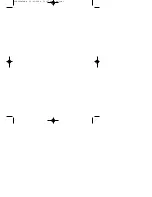
PCI Quad 422/485 Card
Chapter 7 Windows 98/Millenium Installation.
•
38
FIFO Settings.
Enable FIFO - turns the selected ports FIFO buffer on or off. It is strongly
recommended that the FIFO for both ports is left enabled.
Extend FIFO - when checked, extends the selected ports FIFO buffer from 16
to 64 bytes.
Receive Buffer - These settings allow the selection of a receiver FIFO trigger
setting. Selecting a low value will allow the interrupt to be serviced quicker,
which is good for slow machines. If you have a fast machine, setting a high
value will give you more time for multi-tasking operations.
Transmit Buffer - These settings allow the selection of a transmitter FIFO trigger
setting. Selecting a low value will send fewer data-bytes per interrupt, and this is
recommended if you are communicating to a slower machine. Selecting a high
value will send more data-bytes per interrupt, and will give more time for multi-
tasking operations.
485 Mode
offers the options:
Half Duplex / Full Duplex(default) - are used in conjunction with the RS485
Multiplex Jumper Settings.
NOTE: These software settings must match the RS485 Multiplex Jumper
configuration, as described in the section "RS485 Multiplex Jumper Settings"
in Chapter 2, to ensure accurate and error free data transmission.
CTS Hold True, determines whether the CTS handshake signal is INPUT from
the external serial device or is permanently forced true on the card. The serial
ports own RTS OUTPUT handshake signals are always taken out to the serial
port connector.
Restore - when this button is clicked the settings in the current window will be
reset to the default values of:
Enable FIFO:
On (Checked)
Extend FIFO:
Off (Unchecked)
Receive Buffer:
3
rd
from left.
Transmit Buffer:
16
485 Mode:
Full duplex.
















































